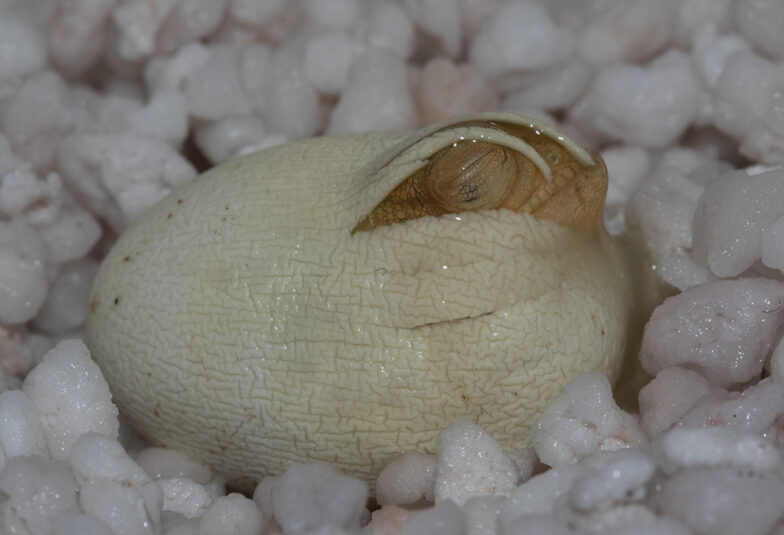The keeping and breeding of Calumma parsonii parsonii has become quite successful in Germany in recent years. There are regular offspring and keeping is also becoming increasingly popular. In the current issue of Elaphe, the magazine of the DGHT e.V., there is a detailed report on keeping this beautiful, large chameleon species. It was written by three members of the AG Chamäleons.
They keep their animals in self-built terrariums made of aluminium profiles and Forex with a completely ventilated lid, and door as well as a full side area or in spacious winter gardens. Living plants provide sufficient cover. Both sexes are kept individually. Lighting is provided by Reptiles Expert metal halide lamps, Arcadia UV-B tubes, and HQIs. The lighting time is 10 to 12 hours in summer and winter. The enormous drinking needs of the species are satisfied by daily manual watering. In addition, feeding is rather sparse with only one adult food animal, e.g. a grasshopper, per chameleon per day (or the equivalent of several smaller food animals). A cooler winter hibernation, imitating the dry season in Madagascar, ensures a higher life expectancy and is therefore recommended by the authors.
Mating takes place in the German midsummer from July to August. The chameleons are put together for a few days until successful matings have taken place. The females are pregnant for four to six months. Between late December and early February, the female digs an elongated tube into the ground and lays 20 to 69 eggs. The incubation of the eggs takes place on perlite at 23 to 24°C. Weekly the eggs are sprinkled with distilled water. In February, a diapause is carried out at 13 to 14°C without further water supply. The young hatch after 15 to 24 months and are then raised individually. Unfortunately, the sex can only be determined at the age of 9 to 12 months.
All in all, this is a very detailed article with a lot of information for chameleon lovers who are interested in keeping this great species or are looking for one or two tips for breeding. In addition, the article discusses the distribution and habitat of the different colour varieties of Calumma parsonii parsonii on Madagascar.
Parsons-Chamäleons (Calumma parsonii parsonii) – Madagascar’s Gentle Giants
Alexandra Laube, Andreas Augustin und Thorsten Negro
Elaphe 3, 2023, pp. 12-25
Foto: Schlupf eines Parsons Chamäleons, fotografiert von Alex Laube


